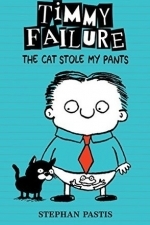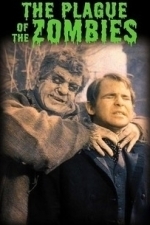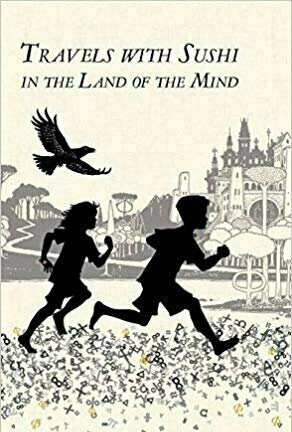
AccuWeather - Superior Accuracy
Weather and Travel
App
Stay connected to the latest in weather forecasting with AccuWeather – Weather for Life. This...

Contract Killer: Sniper
Games and Entertainment
App
You are a master assassin, hired to infiltrate secure locations and eliminate high-profile targets....
Kristy H (1252 KP) rated The Guest Room in Books
Feb 13, 2018
This was an interesting book with a somewhat fascinating premise. It brings up a lot of questions about morality. What role does our society play when it comes to bachelors parties -- and what is the expectation of those attending? And the spouses and fiancees on the other side? What do we tell ourselves about the origin of the "talent" that appears at such functions? Bohjalian attempts to explore these questions through Richard's story - which unfolds from Richard's perspective, that of his wife, Kristin, and one of the hired girls, Alexandra. It becomes almost a bit of a thriller - as we piece together bits before the party, the aftermath, and also learn what led up to the girls' fateful decision.
A bit of the book lags in the beginning, but it picks up quickly and becomes quite compelling. One would think Richard would be the main character, but for me, the story revolved around Alexandra. Her tale is the most thought-provoking and insightful. At points, the novel is simply heart-breaking. Richard's sections are often irritating and frustrating, as you can only have so much sympathy for the man at points. Kristin is a good go-between - the innocent bystander blindsided by what occurred in her home when she was not there.
Overall, the book weaves the story nicely around its characters. Little details give a nuanced perspective that authors less experienced than Bohjalian may lack (he's also one of the few authors that has me hitting the dictionary from time to time to look up words). There was a time when I really felt my rating for this could range from 2 - 4 stars. It received a bump for the ending, which just felt fitting, and for Alexandra, who was a lovely protagonist and written in such a quiet way that doesn't come along very often. In the end, this felt more than a "life in suburbia gone terribly wrong" story - it was cold and heartless, yet heart-breaking and compassionate. A worthwhile read, for sure.
(Note: I received an ARC from Netgalley in return for an unbiased review.)

A Tigers Destiny (Tiger Protectors #3)
Book
He's one beast of a bodyguard... Kel Cunningham is the only white tiger shifter in the world....
Hazel (1853 KP) rated Timmy Failure: The Cat Stole My Pants in Books
Sep 12, 2017
For fans of Diary of a Wimpy Kid (Kinney, 2004) is a juvenile series by American author, Stephan Pastis, about a young boy who believes he is the world’s greatest detective. A series that is continually growing, the sixth Timmy Failure story is now available for fans and new readers. Subtitled The Cat Stole My Pants, Timmy Failure embarks on an adventure of mystery and crime solving whilst getting himself into all sorts of mischief.
Emulating both real and fictional detectives, Timmy has established his own agency, Failure, Inc., of which he is the sole employee after the flight of his (imaginary) ex-business partner, Total the polar bear, who is currently seeking political asylum in Cuba. Unfortunately, Timmy has been forced to join his mother and Doorman Dave on their honeymoon in Key West, Florida, along with Doorman Dave’s nephew, Emilio.
“Crime doesn’t take a holiday. Neither does greatness.” Determined to continue solving crimes, Timmy hires Emilio as an unpaid intern and sets off searching for crimes, greatly over exaggerating every little piece of “evidence” he finds. However, it soon appears that someone is out to get Timmy and he, along with Emilio, is determined to find out whom.
Timmy is a melodramatic, unconventional child with a large ego and is constantly getting told off. From annoying adults to having his pants stolen by a polydactyl cat – or so he claims – there is no end to the hilarious situations he causes.
The cat that stole Timmy’s pants only makes a brief appearance in the book, therefore the subtitle is more to attract the attention of young readers with its silliness rather than be suggestive of a certain storyline.
Despite his grand claims, Timmy is not a very good detective and a lot of his unsolved crimes have been invented by his overactive imagination. This adds to the humour because, although he seems like an intelligent child, his ideas are completely silly.
Adorned with childish drawings and diagrams, Timmy Failure narrates the story from his subjective point of view, inflating his successes and blaming any failure on poor Emilio. No one takes Timmy seriously, which is something many of the target readers may appreciate, although they should also understand how futile Timmy’s attempts are at being a detective.
The storyline is not particularly clear until the final chapters of the book. Up until that moment, the book is full of disastrous, imaginary detective endeavours that prove Timmy to be nothing more than an annoying, inventive boy.
Some of the language may be above children’s reading capabilities, however, the humour is directly on their level. Whereas an adult may not find the idea of a cat stealing someone’s pants amusing, a child would find that hysterical.
There is no reason to read the Timmy Failure books in order, so if you, like me, read book six first, there is no problem. The stories are particularly aimed at young boys and will hopefully encourage the demographic to start reading more. Whilst it may not be a great feat of literature, it is a good enough introduction to the world of books.
Gareth von Kallenbach (980 KP) rated Sin City (2005) in Movies
Aug 14, 2019
Set in the fictional Basin City, the film is a series of segments that weave in and around each other to tell various stories and side plots without a clear cut beginning and end as the conclusion of one segment often mirrors portions of the events in another.
While the film does not have a linear plot in the traditional sense, each segment is a snapshot of life in Basin City and how it is viewed by the various people that dwell within. It does not take a genius to see that the city is rife with all manner of unsavory characters from child molesters to cannibals. Basin City is also a place where people are not always the sum of their parts as a violent and disfigured thug named Marv (Mickey Rourke) can show humanity and compassion as he attempts to avenge those who were wronged. It is a place where a person with a dubious past and a new face named Dwight (Clive Owen), is town between the life he left behind and his desire to protect those who are in danger.
The film is chocked full of dialogue that is reminiscent of classic pulp novels and comics of the 40’s and 50’s where characters were often as two dimensional as the pages in which their exploits were chronicled. While this at first seems awkward and hokey it tends to grow on you as it is an accurate reflection of the locales and inhabitants that comprise the city.
While most of the film is shot in a black and white style, there are flashes of color that make a gripping contrast to the usually blank characters. Examples of which are seen in many of the films violent action sequences where blood and other gore are used for artistic effect. In one example, graphic shooting segments are left in a muted black and white allowing us to see the gore in a muted sense. The impact of the scene is not lost but it is rendered in an artistic and unique manner that is amazing to see. While you should be horrified at what you see, you find yourself captivated by the clever color and camera work that is used to render the scene. At other times, the crimson color of blood is used to emphasize a scene and illustrate and illuminate a character.
If this sounds confusing, it is due to the fact that to many “Sin City”, is a film that is a unique looking film, that has a pacing and style all its own, and does not play by the traditional rules for a film. While films such as “Heavy Metal” and “Sky Captain and the World of Tomorrow” have brought graphic novels and visually unique pulp stories to the screen, it is the constant adherence to the source material, and directors Robert Rodriguez, Frank Miller, and Quentin Tarantinos ability to blend their unique styles seamlessly that makes this film interesting.
The action of the film is very well choreographed and despite being very, very graphic in places, it nonetheless entertains and rarely seems gratuitous. The film also has a surprising amount of comedy as there were several moments that caused the audience at my press screening to erupt.
While it does not offer much in the way of plot or acting, the performances are appropriate to the characters and settings .The all-star cast does a great job in conveying the motivations of their characters as the audience is given just what the need to know about a character to make the segments work.
While the film may not appeal to a mass audience due to the unique look and structure of the film, fans of Tarantino and Rodriguez are likely to embrace this film which should likely result in further adventures in Basin City sometime in the near future.

AutoRap by Smule
Music and Entertainment
App
Say something. AutoRap turns your speech into rap. Choose from 100+ beats from artists like Drake,...
Darren (1599 KP) rated The Plague of the Zombies (1966) in Movies
Jul 25, 2019
When Peter’s wife Alice (Pearce) dies, the two try to figure out what killed her, only what they discover isn’t human. Soon it appears the village is being over run by the zombies and they must hunt down the master controlling them.
Thoughts on The Plague of the Zombies
Characters – Sir James Forbes is the respected doctor that gets called upon to help with an unknown medical case, he will help his former student uncover the case, he does believe something unusual is going on and starts to worry about his daughter. Sylvia is the daughter that goes on the journey, she becomes the target from the master who wants her to become his bride. She is the typical 60’s damsel in distress. Dr Peter Tompson is the one who called for help knowing his mentor wouldn’t let him down when it comes to figuring out the unexplainable. Alice is Peter’s wife that is the latest to become cursed with what is happening within the village, she makes it feel more personal for the two doctors.
Performances – Andre Morell as the more experienced doctor is entertaining to watch through the film, he fits the wiser role with ease. Diane Clare fits your typical 60’s horror figure for the era, never doing much more than screaming. Brooke Williams doesn’t make his character feel like a doctor though.
Story – The story follows a doctor that is asked to investigate a new outbreak of a disease in a small village, only to learn it has connection to voodoo and zombies. We must think that this story was put together before zombie movies had over taken the world, the idea behind voodoo and zombies was always a connection which works for the ideas being used in this story. the story might not be the most intense and does end up being rather safe with how everything being handled, never managing to reach any level of creepiness which could be associated with voodoo zombie creation.
Horror – The horror in this film comes from the ideas of zombies and voodoo, which for the time, was one of the scarier elements of horror, even if it has been watered down in the modern era.
Settings – The film is set in a small Cornwell village, which shows us how the community has become considered, while also showing how the community could stick together with a more evil idea going on.
Special Effects – The effects in the film comes from the zombie creations, which show us a wonderful use of make-up, with other elements of the film coming from how injuries are inflicted.
Scene of the Movie – Alice rises.
That Moment That Annoyed Me – Not as creepy as it could be.
Final Thoughts – This is a horror that when released would have gotten more scares, now it has dated and just doesn’t connect the audience in the same way it once did.
Overall: Hammer horror 101
Becs (244 KP) rated Travels with Sushi in the Land of the Mind in Books
Feb 10, 2020
I received a physical ARC from Smith Publicity to read and review for my honest opinion. I would firstly like to thank the author and publisher for the ARC. I would secondly like to say that everything stated down below is my own honest opinion and is no way skewed to be positive just for the sake of the free ARC.
When I first started Travels with Sushi in the Land of the Mind, I was absolutely intrigued with the story and the characters. This story was basically an Alice in Wonderland inspired novel about Quantum Mechanics and Morals. It was an instant love kind of thing and I started holding a higher expectation for the story right then and there. And the story held my interest for the first couple of chapters, wowing me as I wasn’t expecting the turn the story took. But things soon turned and I started dragging through the reading, not wanting to even pick it up to finish.
As I grew further into the book and closer to the end, the story lost a bit of it’s lackluster. I just felt like the story dragged on and was adding far too many details than what was needed. There was also the fact that parts of the plot grew confusing. What really threw me for a loop were the specific scenes and topics that were shown / talked about. These scenes and topics were defiantly not something that I would have expected to see in a children’s middle grade novel. Especially when the audience was perceived to be a younger age group.
The one positive thing that really drew my interest into the story and actually kept me reading, were all of the Quantum Mechanics and Moral lessons that were littered throughout the text. These lessons really shone brighter than the negatives and I am thankful that they were included. And honestly, this was a nice touch to this story.
Overall, this was an entertaining read but the author seemed to want to include far too much in such a small book. Resulting in an overwhelming world where each element was overlooked more than what was needed. Leaving these elements to seem like a bore.





